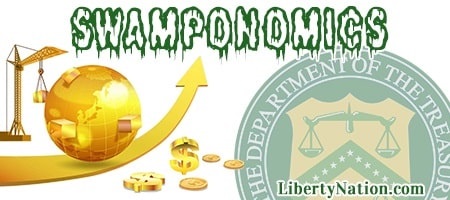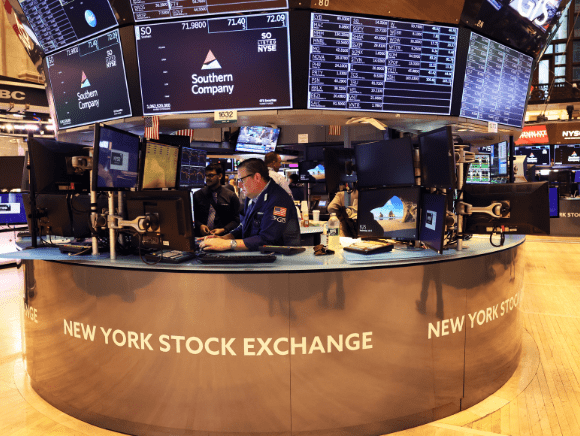Despite the solid economic data on July 15, a US recession is still on the table, based on various estimates and forecasts. Is the US already in the middle of a recession, or is this part of the cycle on the horizon? Wall Street has been mixed on the when, but they are more certain on the why. Indeed, economists are alluding to soaring price inflation as the chief culprit for the coming economic downturn. Although the recent numbers offered some hope for the financial markets, it is hard to dismiss the long-term trends that have formed in the broader economy, particularly in the second quarter of 2022.
In June, retail sales advanced 1%, topping the market consensus of 0.8%. This is also up from the 0.1% drop in May. Import prices eased to 0.2%, while export prices climbed just 0.7%. Business inventories jumped 1.4%, and retail inventories edged up 0.8%. The University of Michigan’s Consumer Sentiment Index surprised everyone by rising to 51.1 in July, coming in higher than the estimate of 49.9. The one- and five-year inflation expectations slipped to 5.2% and 2.8%, respectively. Also, the NY Empire State Manufacturing Index stunned financial markets, rising from -1.2 in June to 11.1 in July.
[substack align=”right”]But it was not all sunshine and lollipops everywhere. Industrial production contracted 0.2% last month, manufacturing output declined 0.5%, and capacity utilization tumbled to 80%.
Equities rallied on the data, with the leading benchmark indexes recording significant gains. The Dow Jones Industrial Average climbed 658 points, the S&P 500 Index added 1.92%, and the Nasdaq Composite Index picked up more than 200 points.
So, this put the recession narrative to rest, right? Not quite. Although investment firms have exponentially raised their odds of an economic downturn, there were two important developments to finish the raucous trading week. First, the Federal Reserve Bank of Atlanta’s GDPNow model estimate weakened to -1.5% for the second quarter. Second, the spread between the two- and ten-year yields widened to more than negative 20 basis points, which is critical because the yield curve inversion has been utilized as a major recession indicator since 1955 because it reflects that long-term economic conditions are viewed by investors as weak.
Will Debt-Fueled Spending Prevent a US Recession?
As a reminder, more than two-thirds of US economic growth depends on consumer spending. If shoppers stay home to read a clever Agatha Christie whodunit or lie on the sofa and stare at the ceiling listening to J.S. Bach’s “Goldberg Variations,” the gross domestic product (GDP) will take a significant hit. That said, two crucial numbers should be carefully noted by everyone: the personal savings rate has plunged to a five-year low of just 5.4%, and revolving credit growth has soared to multi-decade highs.
To quote the legendary Red Sox pitcher Dennis Eckersley: “Yuck.”
 Although retail sales were up considerably to finish the second quarter, consumption has been on a downward trend for much of 2022. Consumers are swiping, tapping, and inserting for their transactions for anyone still doing the unthinkable and heading to the nearby shopping mall to purchase a pair of tube socks. Of course, credit represents a substantial portion of the economy – one pre-pandemic study found that without borrowing, the United States and other advanced countries would collapse – but it is not a way to effectively grow and sustain a marketplace.
Although retail sales were up considerably to finish the second quarter, consumption has been on a downward trend for much of 2022. Consumers are swiping, tapping, and inserting for their transactions for anyone still doing the unthinkable and heading to the nearby shopping mall to purchase a pair of tube socks. Of course, credit represents a substantial portion of the economy – one pre-pandemic study found that without borrowing, the United States and other advanced countries would collapse – but it is not a way to effectively grow and sustain a marketplace.
But without going into a philosophical discussion on the economy, market experts have often discussed if the American consumer is tapped out. Have their crisis-era funds been exhausted? Are their paychecks not enough to cover daily living expenses? Will households rely primarily on credit cards and loans to keep their heads above water? Can the consumer prevent a recession? The upcoming Bureau of Economic Analysis (BEA) second-quarter GDP will be must-see TV.
Euro Party Time
For the first time in 20 years, the euro has hit parity with the US dollar. The euro hovered just below a one-to-one exchange with the greenback throughout the trading week. But does this matter? Well, for Americans hiking across Europe, the vacation will be cheaper. For European companies, it is bad news since firms will ultimately reduce their output as production costs surge, causing widespread layoffs.
But how did this happen? On the one hand, the buck has strengthened considerably this year, with the US Dollar Index (DXY) surging nearly 13% over the last seven months. On the other, incompetence and fear overseas applied exceptional pressure to the euro, forcing traders to seek elsewhere for refuge.
Despite everything that has happened to the dollar since the beginning of the pandemic, from near-zero interest rates to $9 trillion being created out of thin air, the international reserve currency still stands. Why? Perhaps investors, who have been accumulating more dollars in 2022, think the Federal Reserve and the US government are the least incompetent entities in the global economy.




